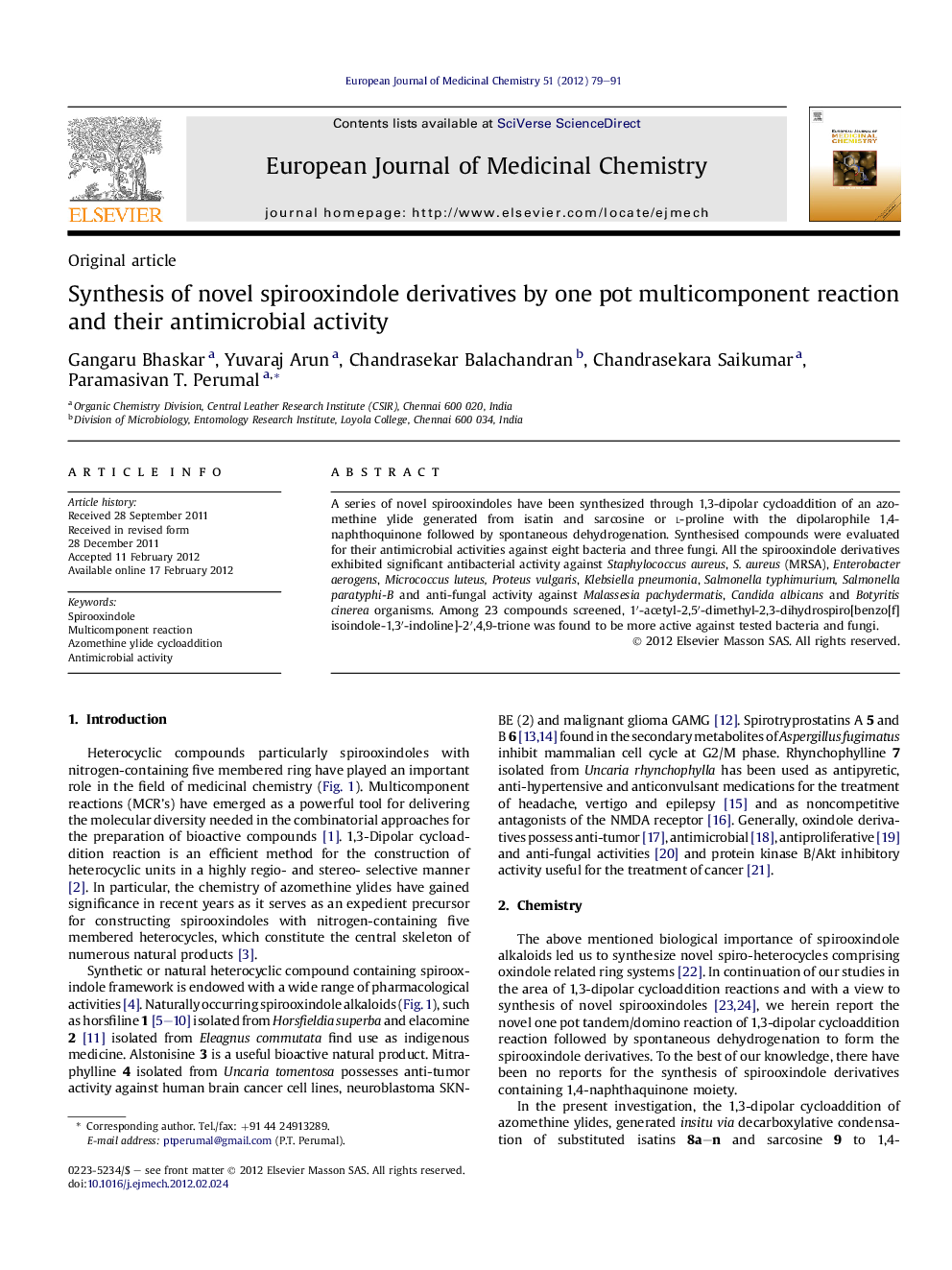| Article ID | Journal | Published Year | Pages | File Type |
|---|---|---|---|---|
| 1399401 | European Journal of Medicinal Chemistry | 2012 | 13 Pages |
A series of novel spirooxindoles have been synthesized through 1,3-dipolar cycloaddition of an azomethine ylide generated from isatin and sarcosine or l-proline with the dipolarophile 1,4-naphthoquinone followed by spontaneous dehydrogenation. Synthesised compounds were evaluated for their antimicrobial activities against eight bacteria and three fungi. All the spirooxindole derivatives exhibited significant antibacterial activity against Staphylococcus aureus, S. aureus (MRSA), Enterobacter aerogens, Micrococcus luteus, Proteus vulgaris, Klebsiella pneumonia, Salmonella typhimurium, Salmonella paratyphi-B and anti-fungal activity against Malassesia pachydermatis, Candida albicans and Botyritis cinerea organisms. Among 23 compounds screened, 1′-acetyl-2,5′-dimethyl-2,3-dihydrospiro[benzo[f]isoindole-1,3′-indoline]-2′,4,9-trione was found to be more active against tested bacteria and fungi.
Graphical abstractA series of novel spirooxindoles have been synthesized through 1,3-dipolar cycloaddition and evaluated for antimicrobial activities against eight bacteria and three fungi. All the compounds have shown significant activity.Figure optionsDownload full-size imageDownload as PowerPoint slideHighlights► Synthesis of novel spirooxindole derivatives by one pot multicomponent reaction. ► Spirooxindoles have versatile biological and pharmacological significance. ► Tandem 1,3-dipolar cycloaddition followed by dehydrogenation reaction. ► Synthesized compounds were tested against eight bacteria and three fungi. ► The synthesized compounds were displayed significant antimicrobial activity.
